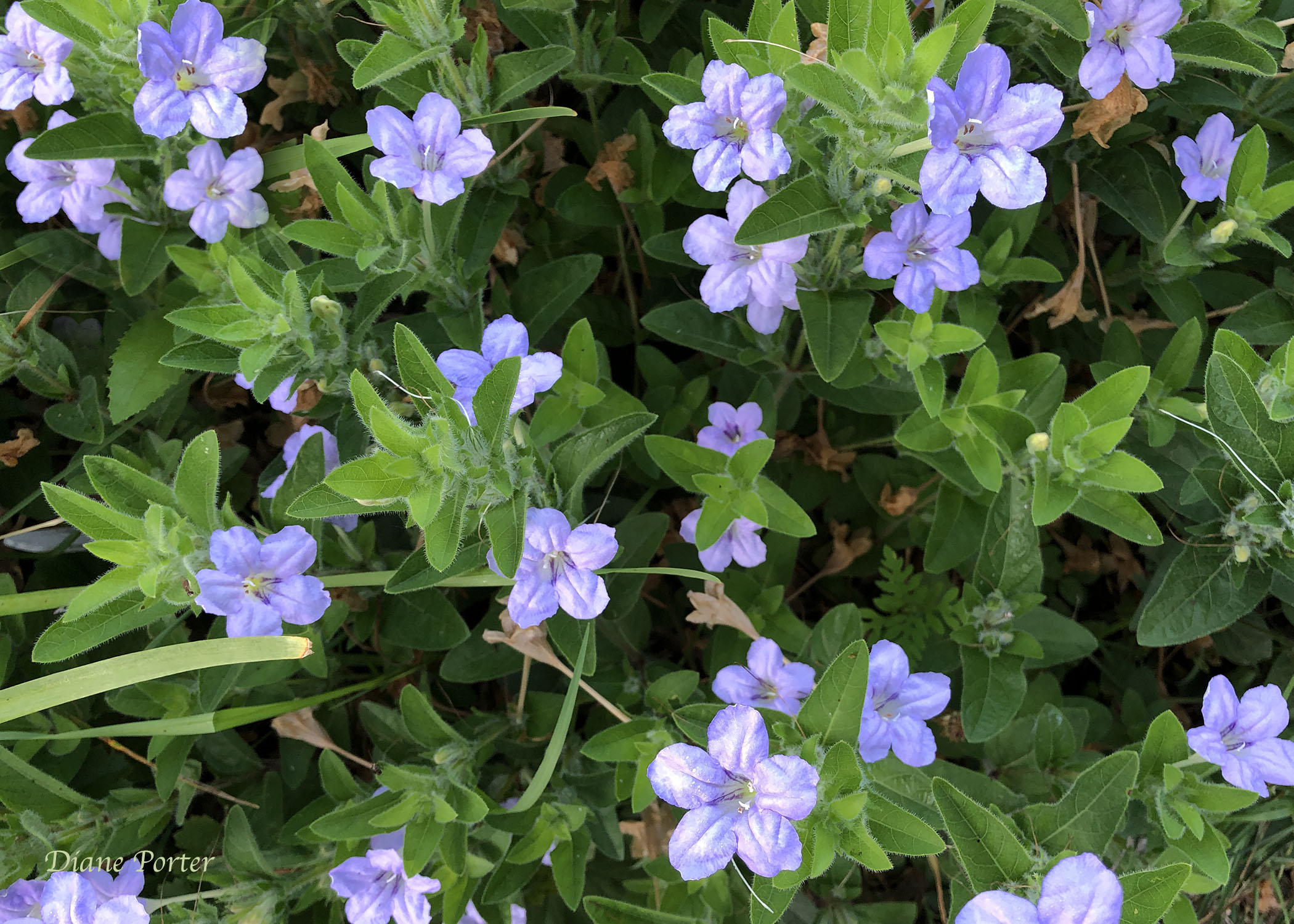Note from Laura Belin: Bleeding Heartland’s Iowa wildflower Wednesday series is going on winter hiatus and will return sometime in the spring of 2025. You can find all past posts focusing on specific plants here, and posts featuring many wildflowers found in one natural area here.
Diane Porter of Fairfield first published this post on My Gaia, an email newsletter “about getting to know nature” and “giving her a helping hand in our own backyards.” Diane also maintains the Birdwatching Dot Com website and bird blog.
I hear explosions from the kitchen. Snappy sounds, like popcorn popping.
However, these are not popcorn. They are Wild Petunia (Ruellia humilis) seeds ricocheting against the inside of a brown paper bag.
It’s tricky to collect seeds of Wild Petunia. It’s hard to pull the seed pods off the stems. It’s also hard to open a pod. I’ve busted a thumbnail trying.
In time, the seed pods open on their own. However, an open pod is an empty pod, and I can never find any seeds.
I added Wild Petunias to my garden by transplanting a few small ones from the woodland edge. A few years later, they started blooming in scattered spots in the lawn, as far as eight feet from the garden. I wondered how they got there.
To collect seeds, in late summer I put whole stems into a paper sack. The pods were still tightly closed. I figured they would open when they were ready, and I could retrieve the loose seeds.
I set the bag on a shelf and forgot all about it.
Ripening seed pods:

Bag of drying stems:

Catapulting seeds
A few weeks later, the popping started. It took me a minute to realize it was coming from the Wild Petunia bag. However, the pods weren’t just releasing the seeds! They were firing them at high velocity.
Smack!
I opened the bag and shook out some seeds. Under a magnifier, I saw that they were round and flat, like miniature poker chips.
Wild Petunia seeds on my index finger:

Seeds are shaped like poker chips:

I also looked at some of the now-empty pods. They were split lengthwise completely in two. Each half looked like a little canoe. From each “canoe,” two hard white protuberances stuck out like broken teeth. Pod halves after seeds have been ejected:

Out of curiosity, I carefully inserted four seeds into an empty pod. They fit neatly into the hollows, each backed against one of the protuberances, like paddlers in little boats. I glued them in place.
Open pods with seeds glued in place:

When I placed the two canoes together like a pair of praying hands, there was room for all four passengers. I thought that was pretty cool.
But what did the inside of a pod look like before it opened?
Gardener does science
I wrapped clear tape around one, thus preventing the halves from separating. A few days later, the halves looked like they were trying to open, but the tape held them together.
Carefully I removed the tape. The pod’s empty halves stayed connected at the base but hinged open like jaws. Four seeds dropped out.
And something else was different.
This time, the protuberances were long and smooth all the way to the tips. When pods open naturally, every protuberance is broken. But these were intact.
Why?
Charles Darwin was the first to describe, in his 1862 Fertilisation of Orchids, that the outside of a pod dries and shrinks faster than the inside, creating tension. When dry enough, it bursts open suddenly, expelling the seeds. Such a seed dispersal mechanism shows up not only among orchids but also in the Acanthus family, which includes Wild Petunia.
The protuberances, the retinacula, are elastic. They are crucial to seed dispersal. The developing pod keeps the retinacula in a bent posture.
When the pod pops open, the retinacula are released, like springs, flinging the seeds several feet away. The force of the explosion breaks the retinacula.
Retinacula are elastic. They act as springs to fling seeds away from plant:

Now I get why I’ve been finding Wild Petunias in my lawn, far from the garden.
Wild Petunia in the garden
Many gardeners are now discovering that Wild Petunia is an easy and attractive native flower. It feeds bees, flowerflies, and myriad other pollinators.
Bumblebee approaches Wild Petunia :

Flowerfly sips nectar:

It’s an outstanding addition to a flower garden. It is a hardy perennial, native to North America. It grows about a foot tall and blooms long, from late spring through summer.
It gets along fine in poor, dry soil and doesn’t need fertilizing or watering. It does best in full sun. In partial shade, I find that it stays shorter but still blooms at least a little.
I like it growing at the edge of a sunny perennial wildflower bed.

Native range
Wild Petunia grows wild in a strip down the center of North America. This Range Map for Wild Petunia comes from BONAP (The Biota of North America Program). Light green means found in a county. Dark green means found in the state but not the county.



1 Comment
Really nice photos!
And thank you, Diane, for telling us what it’s like to harvest wild petunia seeds. I had a similar experience with flowering spurge. Hearing pixies firing tiny pistols in a paper bag is startling but fun.
I really appreciate this past year of Wildflower Wednesdays. Thank you, Laura. I already hope it can start early next spring.
PrairieFan Thu 28 Nov 9:10 PM